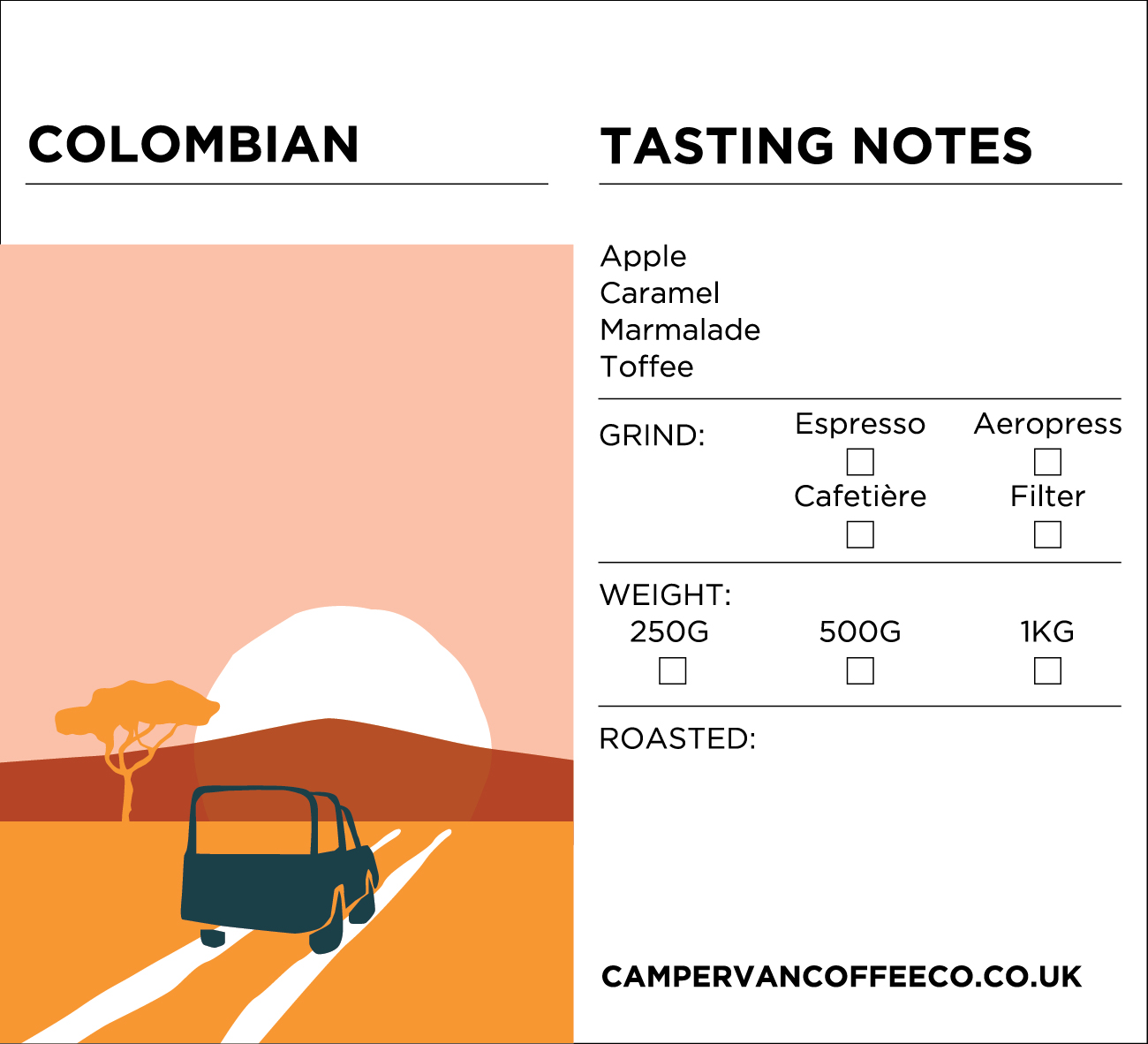Description
Colombia is a country of great diversity, both geographically, culturally, and linguistically – it boasts over 68 ethnic languages as well as Spanish and even English in one of the archipelagos. Its land stretches from the Amazon Rainforest to the highlands of the Andes mountains, and was once the worlds largest producer of washed coffees, from three main geographical areas trisected by the Andes mountain range. This leads to two key harvest times in the country, with fresh coffee available all year. The varietals and farmers will change throughout the year, the work being done by the mills and our QC lab to ensure consistency in the cup.
Rust, a fungal disease appearing as yellow spots on the leaves disrupting photosynthesis, decimated the production back in 2009. The country has seen a rise in resistant varietals since then as production has slowly regrown. Typica was gradually replaced in the 1970’s with the introduction of Caturra, with its higher productivity and more compact growth allowing for increased crop density. The Colombia variety was released in 1982, a cross between Caturra and the Timor hybrid that delivered better rust resistance, and Castillo in 2005 bringing further improvements on both productivity, rust resistance and cup quality.
When ripe, the coffee cherries are picked and go through an initial flotation sorting to remove underripes, sticks, and general debris before passing through a pulping machine and working their way down the washing channels to the fermentation tanks. Here, they will sit for typically 8-14 hours, before moving to the drying patios or guardiolas for controlled drying down to 10-12% moisture. Typically in Colombia, this is carried out on the farm, with processed cherries then being taken to a dry mill for careful grading, tasting, and blending. The coffee is stored in parchment until ready for export, when it is hulled at the dry mill and bagged for shipping. Bean sizes 15-16 are graded as Excelso





Reviews
There are no reviews yet.